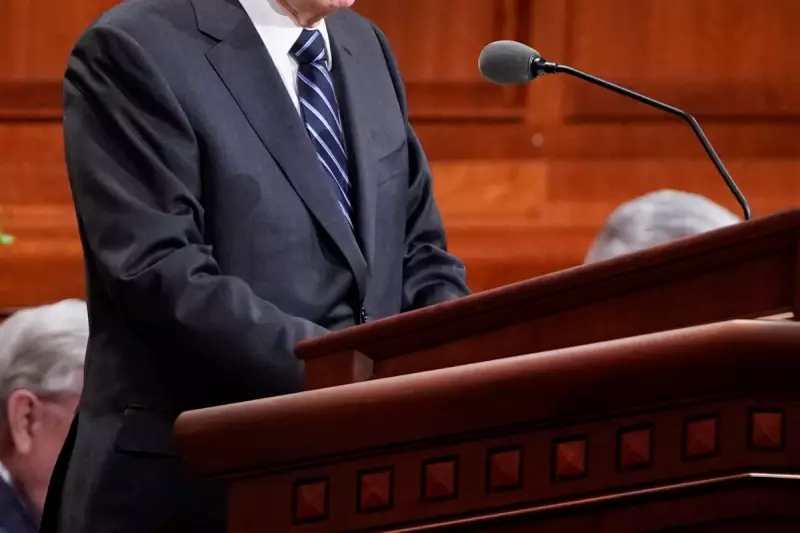
In a significant development within one of America's most prominent religious institutions, The Church of Jesus Christ of Latter-day Saints is undergoing a notable leadership transition. President Dallin H. Oaks, 91, has assumed senior authority among the church's apostles following health-related challenges affecting 95-year-old President M. Russell Ballard.
Leadership Restructuring in the Mormon Hierarchy
The transition places President Oaks in a position of increased responsibility within the church's complex hierarchical structure. While the shift doesn't represent an official change in the church presidency, it effectively positions President Oaks to undertake additional duties during President Ballard's period of recuperation.
This development comes at a crucial time for the 17-million-member global religious organization, highlighting both the challenges and resilience of its leadership framework.
The Apostolic Succession Process
According to established church protocol, the senior apostle automatically assumes leadership responsibilities when the church president is unable to fulfil his duties. This system ensures continuity within the religious organization's governance.
President Ballard, who had been serving as the Acting President of the Quorum of the Twelve Apostles since 2018, continues to hold his title despite current health limitations. The church has emphasised that this arrangement reflects standard operational procedures during periods of leader incapacitation.
Historical Context and Future Implications
President Oaks brings considerable experience to his enhanced role, having served as an apostle since 1984 following a distinguished legal career that included a position on the Utah Supreme Court. His legal background and decades of religious service position him as a steady hand during this transitional phase.
The leadership adjustment raises questions about the future direction of the Mormon Church, particularly regarding how it will address contemporary social issues while maintaining traditional values. President Oaks has historically been known for his conservative stance on various social matters, which may influence church policy decisions during his period of increased authority.
Church representatives have reassured members that the institution remains stable and that the leadership structure is designed to accommodate such transitions seamlessly. The situation also highlights the advanced age of several senior church leaders, prompting discussions about succession planning within the religious organization.
As the Mormon Church navigates this period of adjusted leadership, both members and observers will be watching closely to see how President Oaks exercises his expanded responsibilities and how the institution addresses the challenges facing modern religious organizations.




